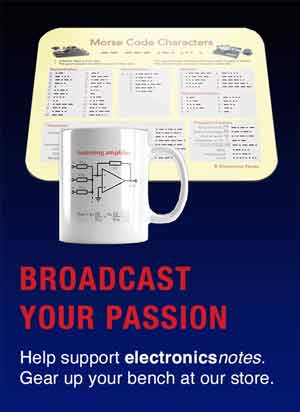U-NII Wi-Fi / WLAN Bands & Frequencies
The Unlicensed National Information Infrastructure, U-NII bands are spectrum that has been defined by the FCC in the USA for Wireless LAN, WLAN use giving access to users as unlicensed spectrum.
WiFi IEEE 802.11 Includes:
Wi-Fi IEEE 802.11 introduction
Standards
Wi-Fi Alliance generations
Security
How to stay safe on public Wi-Fi
Wi-Fi Bands
Router location & coverage
How to get best Wi-Fi performance
How to buy the best Wi-Fi router
Wi-Fi boosters, range extenders & repeaters
Wi-Fi mesh network
Wi-Fi wired & powerline extender
Buy Wi-Fi equipment
Wi-Fi spectrum topics:
Wi-Fi Bands
6 GHz Wi-Fi band
U-NII bands
The U-NII bands are often referred to in literature about the 5 and 6 GHz Wireless LAN, WLAN or Wi-Fi bands.
The U-NII or Unlicensed National Information Infrastructure is a designation introduced by the United States Federal Communications Commission, FCC.
These bands are not only used for home Wi-Fi, but also they can be used by some ISPs for service delivery. As such they are important for a wide range of users.
As the designations are generated by the FCC in the USA, they refer specifically to operation in the USA and for their regulatory structure, although the terminology is often used globally.
The U-NII bands fall within the region of 5150 to 7125 MHz, i.e. 5.150 - 7.125 GHz, and the designations range from U-NII-1 to U-NII-8.
It will be noticed looking at the table that U-NII-2 is split into three portions, A, B, and C.
| Summary of U-NII Frequencies, Bandwidths and Designations |
||||
|---|---|---|---|---|
| U-NII Designation | Frequency Range (MHz) | Bandwidth (MHz) | Max power (mW) | Max EIRP (mW) |
| U-NII-1 | 5150 - 5250 | 100 | 50 | 200 |
| U-NII-2A | 5250 - 5350 | 100 | 250 | 1000 |
| U-NII-2B | 5350 - 5470 | 120 | -- | -- |
| U-NII-2C | 5470 - 5725 | 255 | 250 | 1000 |
| U-NII-3 | 5725 - 5850 | 125 | 1000 | 20000 |
| U-NII-4 | 5850 - 5925 | 75 | -- | -- |
| U-NII-5 | 5925 -6425 | 500 | -- | -- |
| U-NII-6 | 6425 - 6525 | 100 | -- | -- |
| U-NII-7 | 6525 - 6875 | 350 | -- | -- |
| U-NII-8 | 6875 - 7125 | 250 | -- | -- |
Additional names
The bands and their nomenclature are widely used, but in some cases alternative names may be seen and used. To prevent confusion, the aliases or alternative names are tabulated below. If no entry is seen, then no alterative name is in common used.
| Alternative Names for U-NII Bands |
||||
|---|---|---|---|---|
| U-NII Designation | Alternative / Alias | |||
| U-NII -1 | U-NII Low, U-NII Indoor | |||
| U-NII-2A | U-NII Mid | |||
| U-NII-2C | U-NII Worldwide, U-NII Extended, U-NII-2e | |||
| U-NII-3 | U-NII Upper, U-NII ISM | |||
| U-NII-4 | U-NII DSRC/ITS | |||
U-NII details
Some additional background and details are given in the list below about the various bands, their usage, development and their designations, etc.
U-NII-1: In view of the risk of interference to other users of this portion of the spectrum, this band was originally limited to indoor use, giving rise to its alternative name, and a power limit of 50 mW. However later regulation changes lifted the usage to enable outdoor use with a maximum fixed power of 1 watt and an EIRP or 4 watts for point to point and multipoint. Also the power limit for just point to point operation was lifted to 200 watts, although with very strict out of band emission limits.
U-NII-2A: This U-NII band is available for both indoor and outdoor usage, but it is necessary that devices using it can implement Dynamic Frequency Selection, DFS to enable interference to other primary users to be avoided. The power is limited to 250 mW, but users can install their own antennas.
U-NII-2B: This frequency spectrum consisting of an allocation of 120 MHz is not currently allocated for unlicensed use within the USA.
U-NII-2C: This band can be used for both indoor and outdoor use, although dynamic frequency selection must be used. The power is limited to 250 mW.
U-NII-3: This band, also called U-NII Upper overlaps with the 5 GHz ISM band and this gives rise to one of its alternative names. regulations allow for a power up to 1 watt to be sued and a user installed antenna.
U-NII-4: This band is currently not allocated for general unlicensed use, but it can be used for Dedicated Short range Communications Service, DSRCS, and as a result this gives rise to it alternative name. Licensed radio amateurs may also use this portion of the spectrum.
U-NII-5: This band, covering 5925 - 6425 MHz, forms part of the 6 GHz Wi-Fi, Wireless LAN allocation that is being used for Wi-Fi 6E and beyond.
U-NII-6: This band, covering 6425 - 6525 MHz, forms part of the 6 GHz Wi-Fi, Wireless LAN allocation that is being used for Wi-Fi 6E and beyond.
U-NII-7: This band, covering 6525 - 6875 MHz, forms part of the 6 GHz Wi-Fi, Wireless LAN allocation that is being used for Wi-Fi 6E and beyond.
U-NII-8: This band, covering 6785 - 7125 MHz, forms part of the 6 GHz Wi-Fi, Wireless LAN allocation that is being used for Wi-Fi 6E and beyond.
The U-NII designations are often seen when referring to Wi-Fi, Wireless LANs and other services that sue soem of these bands. However it must be remembered that these designations and the regulatory aspects refer to the USA and different regulations will apply to other countries. However understanding the regulations is very useful in many instances.
 Written by Ian Poole .
Written by Ian Poole .
Experienced electronics engineer and author.
Wireless & Wired Connectivity Topics:
Mobile Communications basics
2G GSM
3G UMTS
4G LTE
5G
Wi-Fi
Bluetooth
IEEE 802.15.4
DECT cordless phones
Networking fundamentals
What is the Cloud
Ethernet
Serial data
USB
LoRa
VoIP
SDN
NFV
SD-WAN
Return to Wireless & Wired Connectivity



